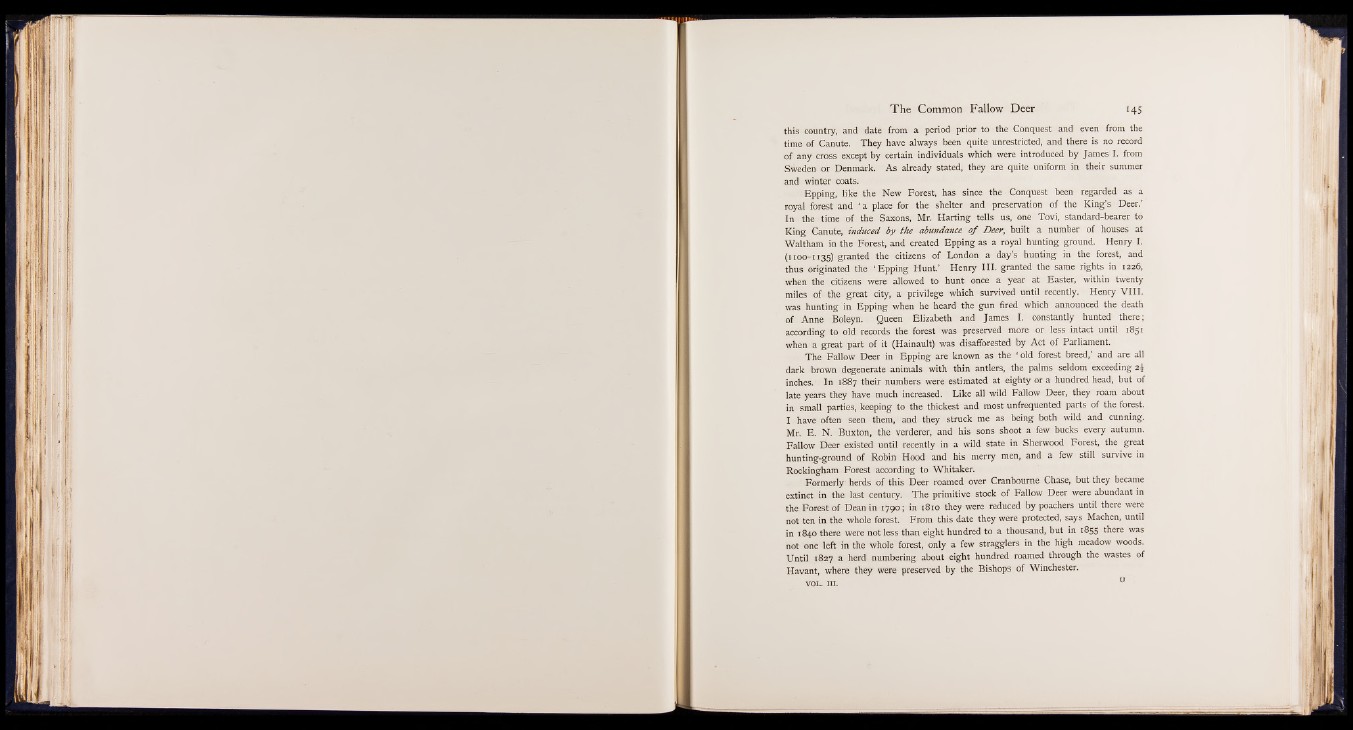
this country, and date from a period prior to the Conquest and even from the
time of Canute. They have always been quite unrestricted, and there is no record
of any cross except by certain individuals which were introduced by James I. from
Sweden or Denmark. As already stated, they are quite uniform in their summer
and winter coats.
Epping, like the New Forest, has since the Conquest been regarded as a
royal forest and ‘ a place for the shelter and preservation of the King’s Deer.’
In the time of the Saxons, Mr. Harting tells us, one Tovi, standard-bearer to
King Canute, induced by the abundance o f Deer, built a number of houses at
Waltham in the Forest, and created Epping as a royal hunting ground. Henry I.
(1100-1135) granted the citizens of London a day’s hunting in the forest, and
thus originated the ‘ Epping Hunt.’ Henry III. granted the same rights in 1226,
when the citizens were allowed to hunt once a year at Easter, within twenty
miles of the great city, a privilege which survived until recently. Henry VIII.
was hunting in Epping when he heard the gun fired which announced the death
of Anne Boleyn. Queen Elizabeth and James I. constantly hunted there;
according to old records the forest was preserved more or less intact until 1851
when a great part of it (Hainault) was disafforested by Act of Parliament.
The Fallow Deer in Epping are known as the ‘ old forest breed,’ and are all
dark brown degenerate animals with thin antlers, the palms seldom exceeding
inches. In 1887 their numbers were estimated at eighty or a hundred head, but of
late years they have much increased. Like all wild Fallow Deer, they roam about
in small parties, keeping to the thickest and most unfrequented parts of the forest.
I have often seen them, and they struck me as being both wild and cunning.
Mr. E. N. Buxton, the verderer, and his sons shoot a few bucks every autumn.
Fallow Deer existed until recently in a wild state in Sherwood Forest, the great
hunting-ground of Robin Hood and his merry men, and a few still survive in
Rockingham Forest according to Whitaker.
Formerly herds of this Deer roamed over Cranbourne Chase, but they became
extinct in the last century. The primitive stock of Fallow Deer were abundant in
the Forest of Dean in 1790; in 1810 they were reduced by poachers until there were
not ten in the whole forest. From this date they were protected, says Machen, until
in 1840 there were not less than eight hundred to a thousand, but in 1855 there was
not one left in the whole forest, only a few stragglers in the high meadow woods.
Until 1827 a herd numbering about eight hundred roamed through the wastes of
Havant, where they were preserved by the Bishops of Winchester.
vol. hi. u